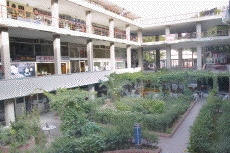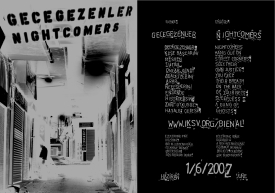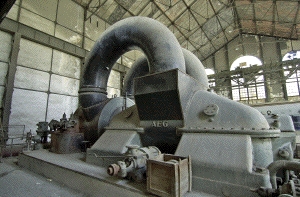Reinventing Biennials
A letter from Hou Hanru to Hans Ulrich Obrist
Dear HUO
Nice to see you again at the Venice Biennale opening earlier this month: as intense and inspiring as usual, one of those ‘hurricane moments’ we always have!
In my opinion, this Biennale reflects the very interesting and delicate situation that we as curators, critics or in fact anybody working in the arts find ourselves in today. It shows the complexity of our positions. On the one hand we are once again attempting to engage artistically with the social and political, especially to voice our criticism of today’s wars and geopolitical circumstances. On the other, we are somehow conditioned by certain visions dominated by the established institutions that increasingly search for safety and security in their economic and social positions as well as aesthetic choices. This contradiction is demonstrated very clearly in the main show at this Biennale, where again on the one hand you have courageous confirmation of a political position, and on the other, a contradictory confirmation of a much more conservative aesthetic position that opted for a MoMA-like model of presentation.
Transcending ‘gauche caviar’
Ultimately, what this conservative aspect shows us is that to counter this affirmation of ‘aesthetic security’, we must reinvent the voice of the Left, which has to a great extent become a kind of ‘gauche caviar’. This reinvention should not only be in terms of the themes, the topics, and the positioning or declaration of causes, but also of language – in terms of the performative aspect of being. It implies a continuous self-critique and self-subversion of our profession.
I think this desire for reinvention is something you and I, together with a few others, have been striving to develop over the last decade or so. And from my perspective, it has been a very conscious choice.
Certainly, this is a very demanding job, and very challenging in the sense that we need to mobilize artists to share the same intention, the same spirit, and the same actions while constantly questioning our own knowledge, tastes, values and social consciousness. I think it is very important and even fundamental to enter into this kind of active dialogue with artists and other relevant individuals, to encourage the incessant questioning, challenging, subversion, deconstruction and renewal of established notions of art and creation. This is something you and I have been discussing and experimenting with for the last decade or so, during our collaborations on projects such as Cities On The Move and The Second Guangzhou Triennial, Beyond: an extraordinary space of experimentation for modernization. Let me say I hope to continue catalyzing this reinvention process at the upcoming 10th Istanbul Biennial.
For me, a biennial is never only a representation of existing work brought out of the studio or gallery. It is all about injecting fresh energy into something existing, or better yet, about bringing new life to something in the process of being made. The function of the biennial does still have this dimension. And maybe that’s the main reason we still need an Istanbul Biennial after 20 years, difficult as it is to inject new life to a mature event.
Thus we are trying to come up with different curatorial models and strategies that are original and experimental enough to convey that the biennial is no longer about having a nice, wonderful exhibition, but really about mobilizing art communities to reinvent the definition, forms and values of artistic activity; to provide a platform on which significant and pressing cultural, artistic and of course political issues are expressed, shared, debated and tested. So again it is about integrating this public event into a real social community, and hence redefining the role of artistic activities and creativity to confront contemporary reality. The Istanbul Biennial is certainly one of the most relevant contexts in which to implement this idea: being outside the West provides it with the best motivation and reason to go beyond the established system dominated by Western tradition and values. Moreover, the particular history of modern Turkey, intensively incarnated by the dynamic and rich urbanity of Istanbul itself, is a fabulous example of a non-Western society’s effort to modernize itself by inventing its own particular model of development, its specific idealism and utopia, and hence its own modernity. Naturally, the biennial project, by intimately connecting art projects and urban reality, also poses a very important question about the city today: to what extent can one envision public space in a time when everything is being privatized and gentrified by so-called ‘global/liberal capitalism’? And logically this leads us to question how to relocate contemporary art activity in a world in which contemporary art has become largely a commodity or communication tool.
Resisting the logic of consumption
This is why, referring to the idea that an exhibition should be a ‘dynamic complex system’ as we have much discussed, I tried to develop a project for the 10th Istanbul Biennial under the very long and complicated title Not Only Possible But Also Necessary: Optimism in the Age of Global War, a very complicated and somehow ironic description of the ‘conceptual frame’, and a very complex structure: because I think it is important and crucial for us to resist the logic of consumption, and the consumer society that so overwhelmingly dictates today’s art activities. Today most of the media, and by extension, the public, expect to see an event that makes a clear statement, with a clear image, so they can describe it in a couple of lines or a picture and thereby ‘consume’ it. Claiming the real public-ness of an event like a biennial that is by nature an action to reengage art with social reality from a position of defending spaces for intellectual, cultural and ‘immaterial’ values, and hence to promote the public good, we are trying to resist this; to say that in order to understand this event, one has to spend time, explore space, and eventually get into a dialogue with its complex system in all its diverse forms, expressions, discourses, and of course, the different individualities of the artists. To understand and describe the event will thus be a complicated, effort-demanding activity. The rich offerings of the artists, their commitment and talented creations, deserve and demand an equal commitment from the public, including the media.
Therefore, a biennial like this is really an event that can generate different possibilities of production, bring up the issue of the situation in the city, and the current political situation, to be re-understood as a whole, reading how each different cultural context produces its own modernity and own modernization process. Plus, what kind of conflicts have been provoked in this process, providing a new context for creativity.
All this will be realized at Istanbul through a series of site-specific exhibitions. The Biennial will consist of five or six carefully chosen major venues plus numerous temporary sites, making a total of over 30 venues. The Biennial will also be unfolding 24 hours a day, a gesture designed to further integrate the event with the everyday life of the city’s inhabitants, whose sleepless life styles make Istanbul one of the most exciting and cosmopolitan places on the globe.
With each venue I’ve tried to question different aspects of the tension between the project of modernity and its destiny in history and in reality in relation to the nature of the building itself. I selected the sites after several months of research on Istanbul. My decisions were based on several considerations: trying to avoid the traditional reading of Istanbul as a touristic, nostalgic, and exotic city, and putting forward instead the idea that Istanbul has been the center of experiments for the whole modernization process of Turkey, the utopian project of the Republic and of course behind that a whole set of questions about the relationship between East and West, between local conditions and global influences. Different visions and models of modernity have been experimented with and clashed intensely in this extraordinary city. Interestingly, most of the architectural edifices that incarnate this process have never been included in the tourist maps and hence have never been considered as historic sites, despite playing decisive roles in the defining of modern and contemporary ways of living, production population movement and hence the function of the city itself. However, many today are facing an intriguing but challenging destiny: gentrification by global capital power. Today we are witnessing all around the world architectural works marking the ideal of social(ist) systems being replaced by fancy, corporate-style new buildings – showing how rapidly and ‘efficiently’ neo-liberal, neo-conservative ‘revolutionary’ forces are taking over globally to transform our cities, and hence our social and political systems.
Contemporary creation and the city
To sum up, I return to one of the things that has been important about our common efforts: observing closely over the last decade and tackling the question of the relationship between contemporary creation and the city, to see how much contemporary creation is being inspired by the exceptional urbanization over the last ten years, especially in places outside of “the West”, and in turn, how much contemporary art is also playing a role in making this urban transformation even more dynamic and intense, and providing different resources of imagination and inspiration, different strategies, and alternative solutions to many urgent questions.
I think the progression from Cities on the Move and the last Guangzhou Triennial, on which we worked together, to two different biennials, especially the Istanbul Biennial, for me represents a very logical evolution. We have endeavored to review the situation continuously from a critical position to develop a different focus. For example, Cities on the Move is really about the dynamism of urbanization in Asia and how this has truly become a new model of development globally in the current context of geopolitical conflicts.
It’s of course important not to forget a more intimate, more close examination of some urgent questions related to economic, to political struggle, or political conflict, and the world of emotion and spirituality. These push us to explore the space of privacy, of fantasies, of dreaming, and how much this can still be a very important creative force in a society that is increasingly materialistic, increasingly about the production of objects.
So as you can see there is a kind of double focus on two very extreme, very intense points, and these two points are functioning together – almost antithetically ? to generate a new energy, a new dynamism that offers us the opportunity to look at reality from new angles and express innovations in an incessantly shifting voice.
Curating is on the move again…
With hurricane-like, best-ever wishes!
Hanru

The IMC Bula, a masterpiece Turkish modernist architecture combining experimental ‘metabolism’-like design and references to traditional Istanbul Bazaar, will be a site for exploring the economic and productive aspect of modernity as a ‘world factory’.

Nightcomers, a 24 hour video program staged throughout the city.

The santralistanbul power plant site, undergoing conversion into a museum of contemporary art and culture center, will act as a laboratory, educational and workshop environment.
Next
https://www.art-it.asia/en/u/admin_columns_e/ej1F4ZX9kzYfCyShlKAP/
Previous
https://www.art-it.asia/en/u/admin_columns_e/ALUwKxM6F0Db2Se75hBT/
Index
https://www.art-it.asia/en/u/admin_columns_e/9zBAU4WxiwpIvnY65VuF
Originally printed in ART iT No.16 Summer/Fall 2007
